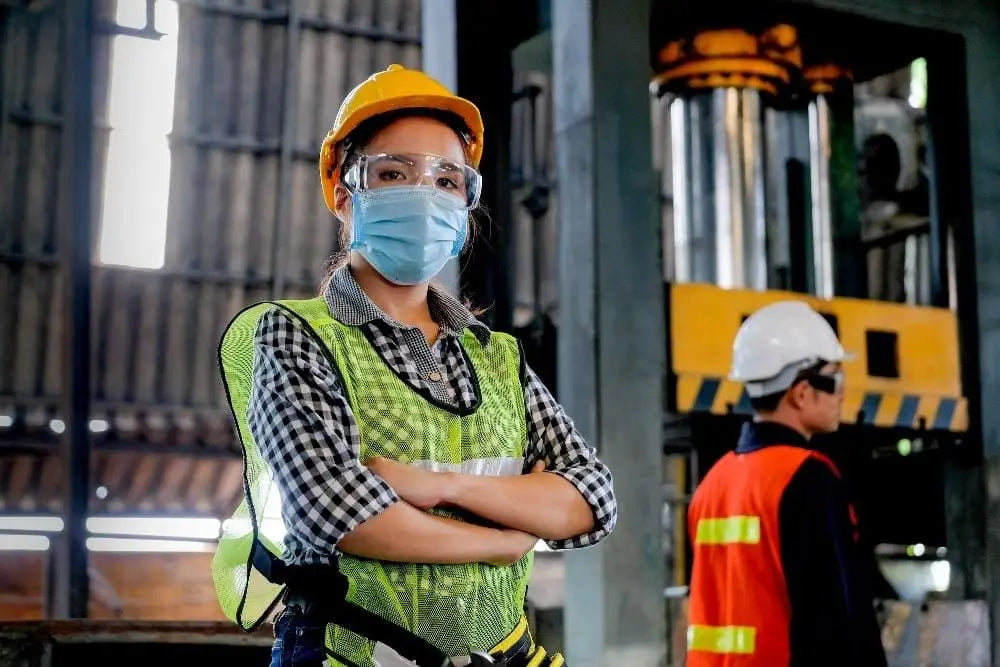From life-saving PPE to weather-proof gear, discover why professional construction worker clothes are the cornerstone of site safety and success.
Understanding the Critical Role of Construction Workwear
In the demanding world of construction, proper workwear isn’t just about looking professional – it’s a matter of life and death. Recent statistics from the Health and Safety Executive (HSE) reveal that approximately 61,000 construction workers suffer workplace injuries annually in the UK, with a significant portion of these incidents linked to inadequate protective clothing. The Construction (Design and Management) Regulations 2015 mandate specific safety clothing requirements, making compliance not just advisable but legally essential. Modern construction worker clothes have evolved beyond basic protection to become sophisticated systems that integrate multiple safety features while maintaining comfort and functionality.
Essential Components of Construction Worker Safety Clothing
- High-visibility Clothing: EN ISO 20471-compliant hi-vis vests, jackets, and trousers with reflective strips, essential for sites with moving vehicles or low-light conditions
- Work Trousers and Shirts: Heavy-duty cotton or poly-cotton blend garments with reinforced seams, multiple pockets, and knee pad inserts
- Safety Footwear: EN ISO 20345-certified boots with steel toe caps, slip-resistant soles, and ankle protection
- Head Protection: EN 397-standard hard hats with adjustable harnesses and ventilation systems
- Hand Protection: Task-specific gloves ranging from general handling to impact-resistant variants
The Science Behind Construction Workwear Design
Modern construction worker clothes incorporate cutting-edge material technology to enhance protection and performance. Advanced fabrics like Cordura® offer up to 10 times the durability of standard cotton, while moisture-wicking technologies help maintain optimal body temperature. Ergonomic design features include articulated joints, stretch panels, and anatomically correct fits that reduce fatigue during long working hours. Impact zones are reinforced with multiple layers or special padding, strategically placed to protect vulnerable areas while maintaining mobility.
Cost vs Value: Understanding Your Safety Investment
While quality construction workwear may seem expensive initially, the return on investment is substantial. A complete set of professional-grade safety clothing might cost £300-£500, but this investment typically lasts 12-18 months with proper care. Consider that the average cost of a workplace injury, including lost time and potential claims, can exceed £8,000. Moreover, studies show that workers with proper safety gear are 23% more productive due to increased comfort and confidence. Insurance providers often offer reduced premiums for companies maintaining high safety standards through proper workwear provision.
Selecting the Right Construction Workwear
- Job Site Assessment: Evaluate specific hazards and requirements (height work, heavy machinery, weather exposure)
- Climate Considerations: Choose appropriate materials for seasonal conditions (breathable for summer, insulated for winter)
- Fit and Comfort: Ensure proper sizing with room for movement but no loose material that could catch on equipment
- Quality Markers: Look for BSI Kitemark, CE marking, and relevant EN standards certification
Maintaining Your Safety Gear for Maximum Protection
Proper maintenance extends the life of safety clothing and ensures continued protection. Follow manufacturer washing instructions strictly – typically 30°C for hi-vis gear to preserve reflective properties. Implement a regular inspection routine checking for tears, worn reflective strips, and compromised protective elements. Store items in dry, ventilated areas away from direct sunlight. Replace hi-vis clothing every 25-30 washes or when reflective properties diminish. Hard hats should be replaced every 2-5 years, depending on exposure to sunlight and impacts.
The Future of Construction Worker Safety Clothing
The construction workwear industry is experiencing rapid innovation. Smart fabrics with integrated sensors now monitor worker vital signs and environmental conditions. New sustainable materials offer the same protection while reducing environmental impact. Graphene-enhanced fabrics provide superior strength and temperature regulation, while biodegradable alternatives to synthetic materials are becoming more prevalent. Connected workwear with built-in GPS and fall detection systems is gaining traction, particularly for lone workers and high-risk environments.
Making Your Safety Investment Count
To maximise your safety clothing investment, follow these essential guidelines:
- Create a comprehensive workwear policy aligned with HSE requirements
- Establish a regular replacement schedule for all safety items
- Train workers on proper use and maintenance of safety clothing
- Document all workwear inspections and replacements
- Review and update safety clothing requirements annually
Remember, quality construction worker clothes are not just a legal requirement – they’re a crucial investment in worker safety, productivity, and business success. By choosing the right gear, maintaining it properly, and staying informed about innovations, you’re protecting your most valuable asset: your workforce.
FAQ
What is wearing in construction?
The types of PPE used in construction include gloves, safety glasses, hard hats, and high-visibility clothing, among others. PPE is worn to minimize exposure to a variety of hazards. Examples of PPE include items such as respiratory protective equipment (RPE), protective clothing, and protective footwear.
What is layout in clothing construction?
A layout is a plan for the placement of pattern pieces on the fabric. There are various categories of layout marking like grainlines, place of fold brackets, notches etc. There are also various methods of cutting marking such as single size, multi-size, and cutting in particular body size.
What is basic clothing construction?
Clothing construction is the process of creating clothes with a customized fit and style. It includes designing and sewing, knitting, weaving, or other methods. It can be done by hand, using a loom, or by using a sewing machine, depending on the type of garment that needs to be created.
What do OSHA workers wear?
OSHA defines high-visibility clothing, also known as hi-vis apparel, as “personal protective equipment (PPE) that employers are required to provide to workers exposed to hazards from moving vehicles and equipment.” This type of clothing is designed with bright colors and reflective materials to increase workers’ …


Leave a Reply